The Factors To Consider Before Investing In Fishponds Business
When you hear people talk about fishpond a lot of thoughts could be running through your mid from the conventional fish ponds to artificial fish ponds all are channeled to a single goal of raising fish for either subsistence or commercial purpose.
When it comes to the business of raising fish somethings could not be the same as compared to some of the other agro-investments. To be profitable in fish farming you are to put lots of factors into consideration as well as be very calculative in spending.
There are things some of the experts could not tell you during seminar which could impact negatively to the profitability of the business for the purpose of selling off their books or coughing products at the seminar. The best expert is the one who told you the whole truth about any investment and allow you to weigh the options available to see if will able to handle the technicalities and get well-prepared for whatever that may be coming your way in the business.
When it comes to fish farming, I will do I much as I could to put you through in what you should be expecting if you are about to invest into it for the first time.
Assuming you have got the money and is considering to starstart a profitable fish farming business there are factors you most pay attention to and such includes:
WATER
Water is one of resources you must consider before venturing into fish pond business. These are the things you need to consider in terms of water:
LOOK OUT FOR MEANS OF WATER SUPPLY
This may not be a consideration if you are not going to run artificial fishpond. In other words if you are going to operate artificial fishpond you have to pay attention to the source water supply.
There are locations that have limited water supply and boreholes usually go dry after sometime. Areas with such record should not be considered for artificial fishpond. Because you will need to be changing the water in the pond as frequently as possible and that requires a reliable borehole as well as water pumping setups.
There are locations that have limited electricity supply or have no electricity available, you should calculate the cost of running generator anytime you want to supply water to the pond.
Beside the above few problems associated with water supply, it can only be considered if you intend to run artificial water supply. However, if you are to run a conventional fishpond located in the river, lake, or artificial dug fishpond on the ground, you still need to consider the certainty of regular water inflow or retainable in the pond. In other words, you should ensure the water in such pond can be trusted not to dry up as the time progresses. The best arrangement for such pond is to have a flowing river around it.
LOOK OUT FOR QUALITY OF THE WATER
Water quality has a lot to do in terms of the quality of fish you can harvest, the mortality, as well as profit and loses. When considering water quality, you put the following into consideration: the acidic and alkaline levels of the water, the purity of the water against harmful germs, and general cleanness of the water.
The above considerations must be done carefully to be able to make concrete decision if you should go ahead with the project or not. The most dangerous among the considerations is the acidic level of the water.
If the acidic level of the water is very high, the water could become harmful to the fish which could lead to mortalities and loss of money. If the water contain harmful germs they can cause sickness to the fish ad increase mortality as well.
CONSIDER WATER CHANGING ROUTINE
The quantity of fish determines the size of the fishpond as well as the water changing routine. Every artificial fishpond needs water changing at least twice a week. If the size of the fishpond is big then changing water will take time and will be of higher cost if you are running generator to pump the water.
Water changing routine will also help to put the availability such water into consideration in areas that have limited water supply.
However, this consideration will not be necessary for the natural fishponds where fresh water flow into the pond naturally.
FISH SIZE/QUANTITY
The size of your fishpond has a lot to do with the cost of running it, the profitability, and the possible losses. If your fishpond investment is big enough to cover the expenses in the business then you are likely going to make enough profit to cover your expenses and even more.
The most profitable fishpond is the one built n a flowing water which saves the cost of water pumping and water treatment as well as water changing routine cost. The mentioned expenses are not available for fishpond built on a natural flowing water. But such fishpond has its disadvantages and risks as well. For instance, natural fishpond has the risk of crocodile attacks on the fishpond to eat up the fishes besides the crocodile, other aquatic carnivorous animal can sneak into the pond bypassing the protection on it to start eating the fishes.
Sometimes fishes in a natural fishpond could be difficult to harvest and some could get missing during harvest for unknown reasons but this may not be the case if the fishpond water can be removed completely to allow full access to the fishes in it.
WHAT QUANTITY PER BATCH
The next consideration is the number of fish you could be harvesting per batch. The overall number will help to determine the profitability or the loss. For full commercial fishpond investment, there could be five to twenty sets of fishponds standing alone with fishes in them. Depending on the size of each, some of such fishpond could be containing more than hundred fishes.
The overall profits come from the profit made from each of the unit of the fishpond.
WHAT TYPE OF FISH
Though fishpond investment could be profitable, it does not mean that it could be done with any kind of fish. There are fish species that has little or no market value hence rearing such fish could be a waste of resources and time.
Catfish has been the most widely reared fish in commercial fishponds because its high commercial value. Some areas use to rear Tilapia and few other fishes with high reproduction rate and high life survival rate.
WHAT SIZE OF FISH
The size of fish is the size it would be before harvesting it. It is recommended to know the peak size of the type of fish you are growing this will help to cut down unnecessary expenses. Some fish species cannot grow beyond a certain size and even if they would grow further the growth rate will be very slow as compared to their food consumption rate.
Fish buyers during fishpond harvesting use weighing scale to weigh the fishes and price it per kilogram. This method of selling has nothing to do with size of individual fish but it has a lot to do with the overall money that can be realized from the sale since small sizes will require large number to makeup one kilogram in the scale while the big sizes will require only few number to makeup one kilogram.
If you are growing catfish, now when it is time to harvest it even if the sizes are small because some species have stunted growth and would stop growing once they reach certain size.
FISHING FEEDING
Feeding the fish is one f the major expenses associated with fish growing business. The fishes need quality food given to them on regular bases. The ore such is given the healthier the fishes will be and the faster they will grow.
However, the cost of those quality fish feed has been one f the discouraging factor for the investors. Except for those making their own local fish feed, already prepared commercial fish feed can cost as high as N5000 per bag which could be consumed within a day in large fishponds or several fishponds in a single farm.
As an investor, take time to put accurate cost of feeding the fishes into consideration before initiating the investment.
WHAT TYPE OF FEED TO BE USED
There two ways of providing feed for the fish. It could either be a natural/locally made feed or processed feed. Either of the method s possible to be used to grow your fishes. However, they have their various advantages and disadvantages. For instance, here are few advantages and disadvantages of the two feeding method:
Process feed
- It is expensive to buy processed fish feed in the market
- Processed can expire if not used in the specified time. And using it to feed the fishes could give them sickness.
- Processed feed can become scarce in the market due to high demand.
- However, it has the benefit of helping the fish grow faster.
- It provides balanced diet to the fishes.
- It helps the fish to remain healthy and looking good
NATURAL/LOCALLY MADE FISH FEED
This is a type of feed that depends on natural method of feeding. It is very common in natural feed ponds. Dropping dead livestock and leftover food into the pond is part f the natural feeding method. Another method is to prepare a local feed for the fish. The local feed could be ground cassava mixed with peanuts and other fish consumables. Some experienced farmers know how to make local feed for fish and could be used as the only source of feeding.
However, it has its own negative and positive gains.
- It could lead to poor growth
- Some fish may become sick due to lack of balanced diet
- Sometimes it could be very difficult to prepare local feed because of lack of the raw materials
- However, on the positive side, it is a cheaper way of providing feed for the fish
- It could be more reliable than the processed feed
WHAT BUDGET FOR FEEDING
Your budget for feeding helps to determine major parts of your expenses and could help you determine the quantity you should grow to avoid starving the fish. If you feed them poorly some will die and while the ones alive would have stunted growth.
If you plan to grow high number then plan to spend high on feeding because feeding the fish is capital intensive.
FISH POND STRUCTURE
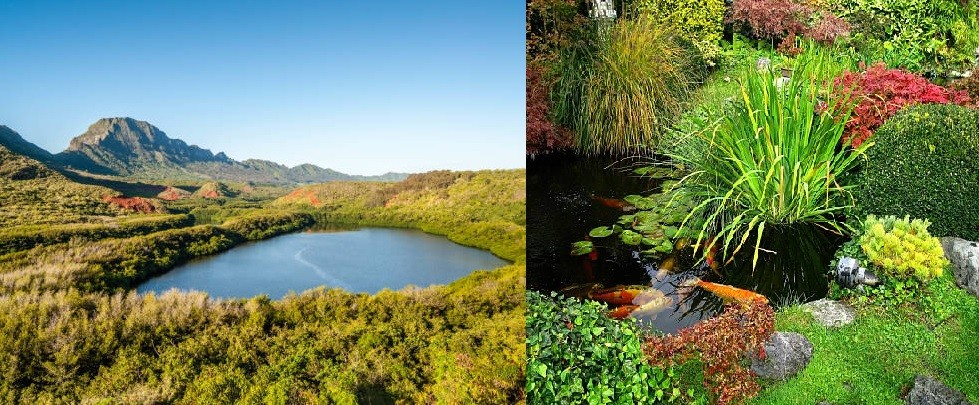
The structure of the feed ponds has a lot with its running cost. There are different types of fishpond structures and each has unique benefits and disadvantages.
TYPE OF FISH POND
There are three popular types of fishpond that could be seen in almost every commercial and subsistence fishpond investment. They are:
DUG FISHPOND
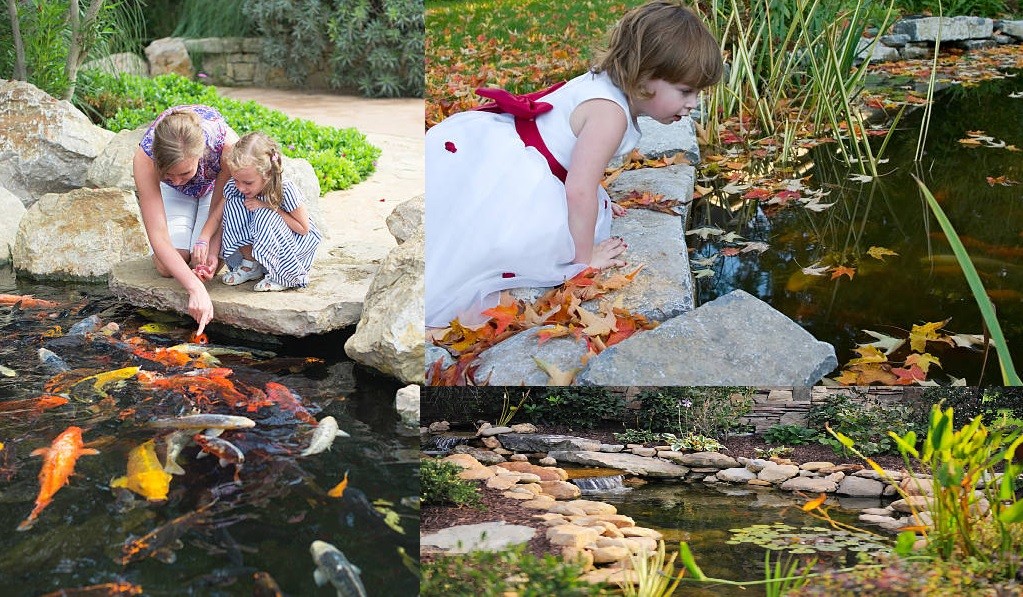
Just as the name implies, the dug fishpond is classified as part of the natural fishponds because it does not require any artificial structure rather than to make a deep and arranged excavation of the soil to allow water to fill up the depth then use it to grow your fish.
This type of fishpond has the disadvantage of water level drop, germs and parasite attacks on the fish as well as possible high cost of excavation. You equally need to be the true owner of the land before this type of fishpond will be advisable.
FLOWING RIVER FISHPOND

This is the cheapest and less capital intensive, however it has the highest disadvantages of disappearance of some of the fish because some could escapes from the pond guard into the wider river when they are small or through unnoticed openings. There could be a crocodile attack, snake, and other animals on the fish and reduce their number before the harvest period. Also, there are usually a difficulty in harvesting the fish
In this type of fishpond lengthy wire mesh or net are used to guard the entire sides of the pond or used to demarcate the exit section of the pond from the rest of the river. The fish will be grown on the secured area of the river.
It has the benefit of not changing water regularly, it has the benefit of some micro-species of fish entering into the guarded area and serving as food for the pond. It also has the advantage of dropping some water plants to serve as sun shields and micro-organisms growing zone for the guarded area which in return serves as food as well as hiding place for some of the fish.
TARPAULIN REINFORCED FISHPOND
Among all the artificial fishponds, the tarpaulin reinforced fishpond is the most widely used because of its advantages. In this type, a well-shaped tarpaulin reinforced with steel bars is used to carry large volume of water which contains the fish to be grown. This type of fishpond is very portable, cheap, and easy to set up at anywhere there is space for it. It could be arranged in good numbers to makeup sizeable number of fishponds that could harvest large number of fish.
Meanwhile, this type of fishpond requires regular inspection, repair, and replacement of weakened steel bars and should not be left empty when not in use.
CONCRETE WALLED FISHPOND
This is another common artificial fishpond that can be found in many places that solely specialize in fish farming. If you have a land and intend to use for fish farming, this type of fishpond will be a better option. It is a one-time investment of raising blocks to form the size and shape of fishpond you want and thereafter, used cement concrete to plaster the entire walls of the fishpond. This will make it to retain water, maintain cold temperature as well as harbor good number of fish.
It has the advantage of low maintenance and can last for a lifetime. It could be built to have any desired depth which makes it ideal for growing large number of fish. It is easy to harvest the fish and there is no loss of fish except the ones that died or were eaten up by other fish.
However, it has the disadvantage of being expensive to build, it only good if you own the land.
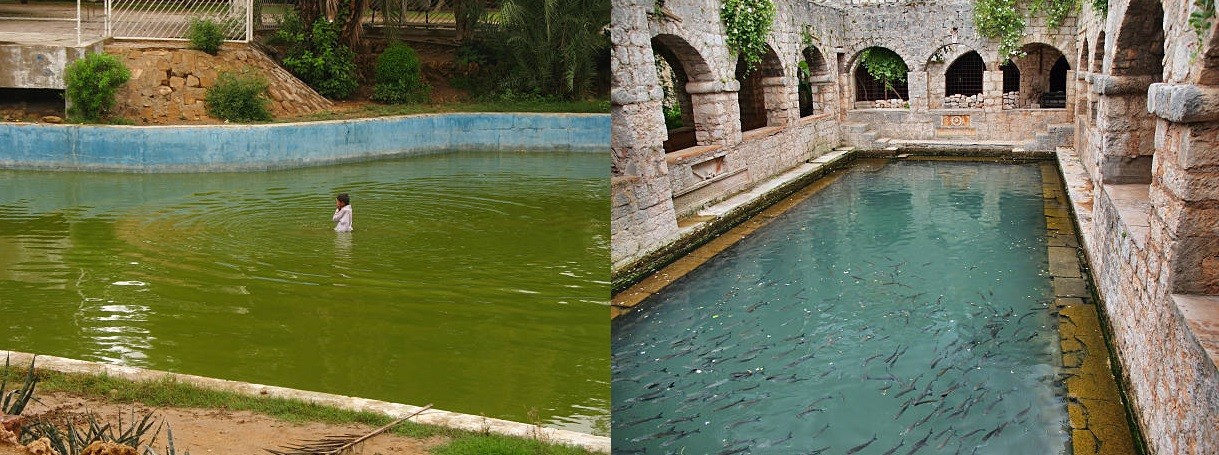
PLASTIC TANK/BASIN FISHPOND
This type of fishpond is rarely used for commercial fishpond though it is still a good option. It is a practice of using large plastic water storage tanks, industrial chemical tanks, and plastic drums, etc. to grow fish. Because of their size, they can only contain few number of fish and require regular changing of water, and good water circulation arrangements.
It has the advantage of being cheap, portable/transportable, and secured for the fish. Meanwhile, it has the disadvantage of carrying only few number of fish.
STRUCTURAL ARRANGEMENTS
One of your consideration should also be how you are going to arrange the structure of the fishpond such that it makes regular water changing easier and less expensive. It should have sheltered area for some fish to hide if they choose to and exposed area for some to feel the light of the day.
The structure should be favorable to workers as well in terms of safety and easy operations. Using pipes to interconnect fishponds helps in water circulation.
DISPATCH/SELLING PATTERN
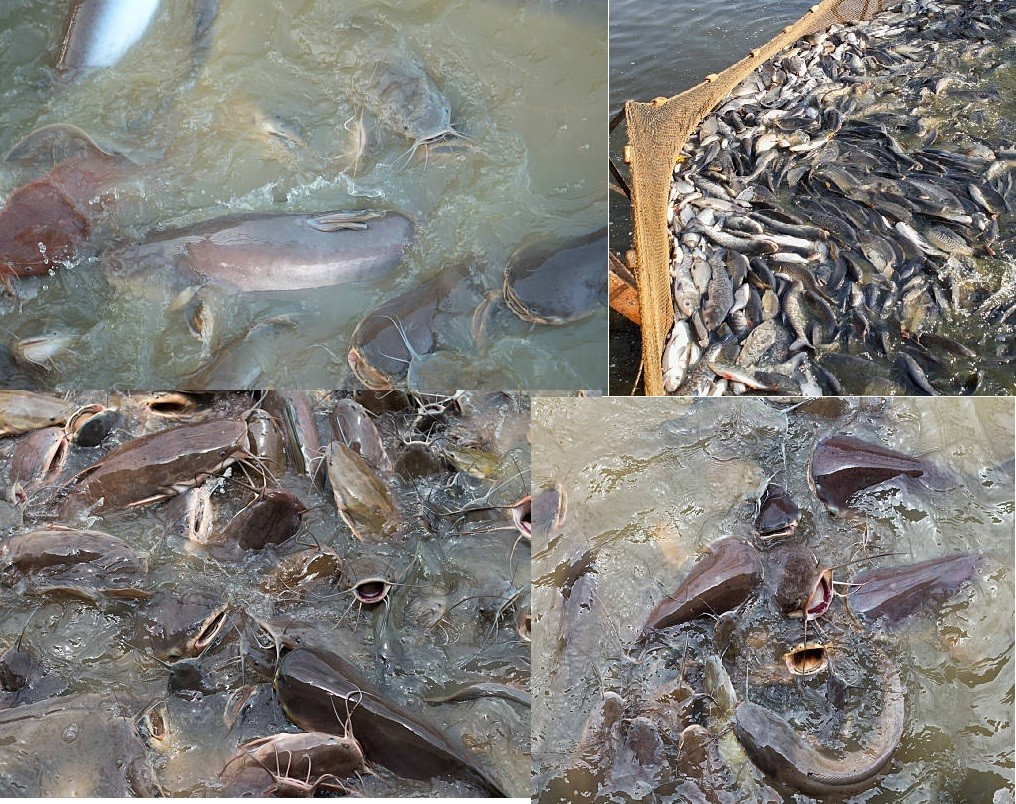
Dispatch/selling pattern has to do with the way you will be harvesting selling the fish. There are options when it comes to this consideration. You could decide to be selling fish according to their age or according to their size.
If you choose to sell according to their age, then a certain duration of time should be mapped out for general harvesting of all the fishes and their selling. Let us assume a period of every four months or less for harvesting depending on the species of fish and their feeding methods.
If you choose to be harvesting and selling according to size, then the matured sizes will be selected from time to time and sold to buyers.
In any of the pattern, the use of scale pan or any weighing equipment will be necessary to know the weight of the fish being sold. Most buyers use per kilogram measurement to determine the price of the irrespective of the size. While some have varying price per kilogram according to the overall size of the fish.
SELLING AGE
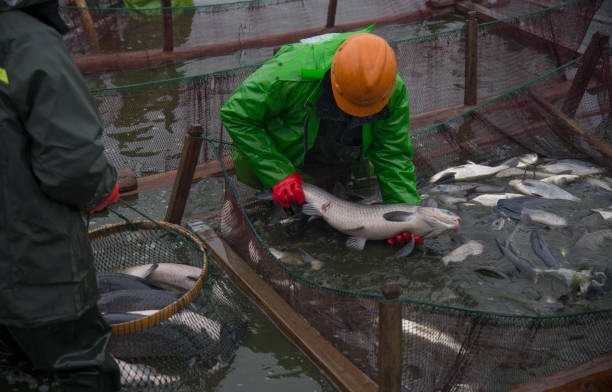
The selling age could be a selling pattern. All the fish in the pond will not be of the same size even though they were all of the same age. It is normal to see small ones and giant ones during harvest. The easiest way to ensure you will not be losing money in feeding the dwarf fishes in their mist thinking they would grow is to set a selling age. Selling age is the time you will evacuate the fishes from the pond and sell them.
This idea could save you some money from feeding cost. Selling age is necessary and should be adopted in fish farming since some fish are dwarf in growth and may not grow bigger even if left to stay in the pond for a longer time.
SELLING PATTERN
Selling pattern is the way you choose to sell the fish after harvest or pre-harvest. For instance, you could choose to be selling according to weight or according to size. If you have fishes that are growing into giants then size selling could be more profitable but if majority of the fishes are dwarf then weight selling could be an option.
When selling in weight, a price could be fixed for every one kilogram this will help you to gather large number of dwarf fishes to obtain one kilogram of weight and sell at that price.
PRICE DETERMINATION
Your selling price are determined by several factors one of such factors are sizes of the fish, the scarcity of the fish in your area, the demand volume, the overall expenses made for the investment, and lots more.
The above considerations for price determination should be done before you increase or reduce price. You can as well confirm how much others are selling.

Conclusion
Having considered the above factors and find them to be favorable to your fish farming project, you can go ahead to invest into it with confidence. You can as well consult other valuable posts such his one to get yourself better equipped.

